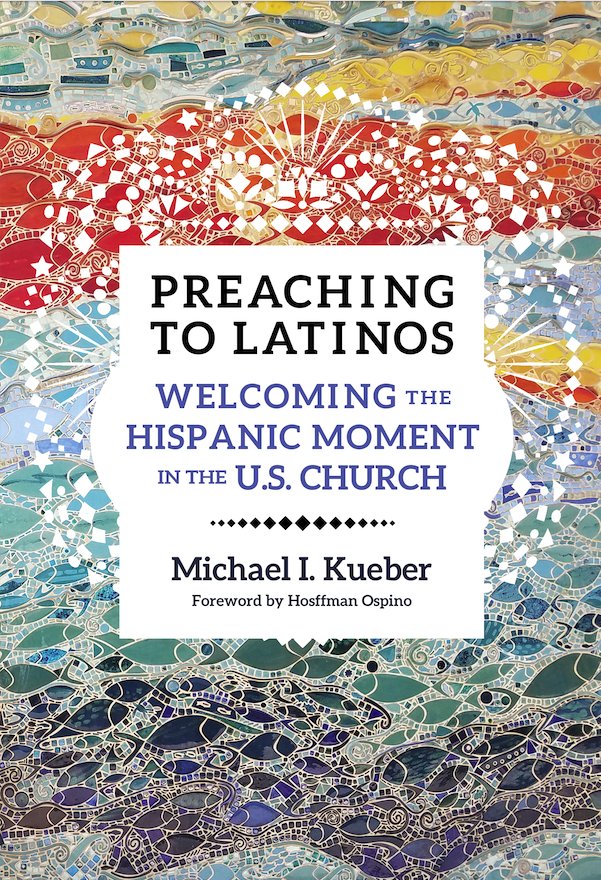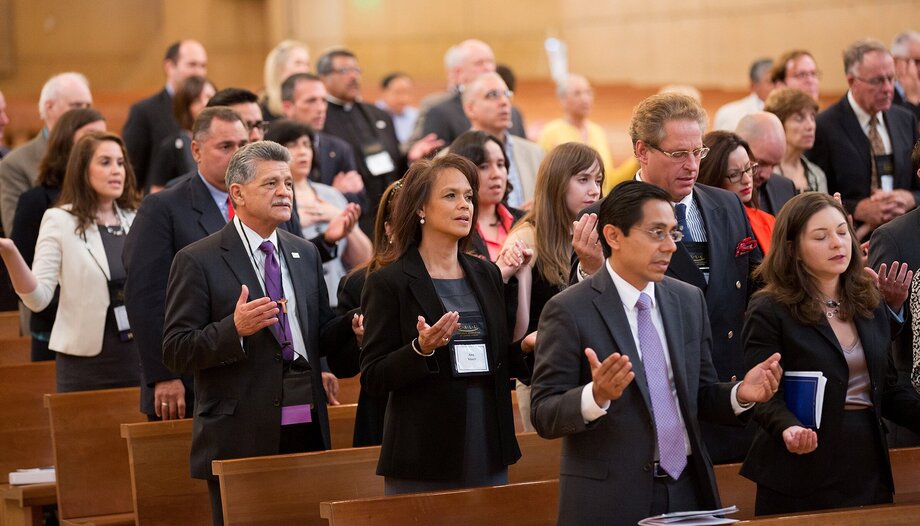 The "clave latina" continues to grow in the U.S.
The "clave latina" continues to grow in the U.S. Marian devotion in the United States, strength for the family
Marian devotion in the United States, strength for the familyThe Church is changing in United States. Immigrants arriving in the country, many of them Hispanic Catholics, find their way in their new home looking for a Church that can welcome them and that, at the same time, they can enrich with their traditions. However, this phenomenon encounters several obstacles, among them the language and the lack of knowledge of the Latino culture on the part of the Americans. This does not mean that this great opportunity of the North American Church is lost and there are people who are making an effort to break down the barriers.
One of these people is Michael Kueber, a priest from the Archdiocese of Portland, Oregon (United States). He’s in charge of the “Ministerio Hispano”, focused on Catholic Latinos. During his ministry, he has realized that “bishops, priests, deacons, catechists and directors of religious education feel unequipped to care pastorally for Latinos in the U.S.”. That’s why he has written a book, “Preaching to Latinos”, to help “pastoral workers to understand Hispanic culture to better enable them to exercise pastoral care”.
Father Kueber speaks with Omnes in this interview about his book and the reality of the “Hispanic Moment” in the Church.
What is the "Hispanic Moment" in the U.S. Church?
–The Hispanic or Latino “moment” refers to the demographic shift occurring in U.S. Catholicism. The U.S. church is undergoing a present transformation, becoming predominantly Latino. It’s estimated that 43% of U.S. Catholics are Latinos while 60% under age 18 are Hispanic. The “Hispanic moment” is breathing new life into the larger church in the U.S. because the Hispanic population is younger and Hispanic couples are having families. They want to raise those families in the Catholic faith. Besides growth, the Hispanic community brings their culture to enrich the experience of Catholic life in the U.S. Their love for processions, statues, images and devotions — the music and food that enriches the experience of the Catholic parish.
How do you help the Hispanic community grow in faith?
– Pastoral workers seeking to help the Hispanic community to grow in the faith should value what the Hispanics value. The center for the Hispanic spirituality is the home and devotions, such as Our Lady of Guadalupe, the cross, and the rosary. These are expressions of popular piety that have handed on the faith for generations. Hispanics often have an altarcito (a little altar) in their home at which they offer their daily prayers and devotions.
Pastoral workers should acknowledge and affirm where the Hispanics are at, and at the same time draw them into the life of the institutional church. They often have not been baptized or confirmed or have made their first communion. They are often married civilly and need to regularize their marriages. Or they are living in “una union libre” (cohabitating). As Hispanics participate in the life of the institutional Church, they should experience mother Church welcoming them and embracing them. They need to hear the gospel and be called to conversion to Christ. They need on-going formation and teaching to progress in their faith over the span of a lifetime.
Is preaching to Latinos different from preaching to Americans?
–Preaching the gospel is different when speaking with Latinos than with North Americans. Hispanics like to participate in preaching much like African American Christians with call and response. Hispanics love stories and vivid imagery in homilies. They also want to learn more about the Bible and their Catholic faith. They want to hear the gospel in Spanish, the language in which they first learned the faith and their prayers. They want the preacher to touch their hearts and call them to live the gospel. They want to encounter God anew so that they have a new hope and strength to return to their lives of family and work.
Are the first generation Catholic Latino immigrants different from the following generations?
–The faith is alive in first-generation immigrants, who believe deeply in Jesus Christ and his Blessed Mother and want to see the power of God manifested in their families. The countries they came from imparted this faith to them through signs and symbols, and they seek to practice this faith in the new world. Every Hispanic country has specific devotions to the Blessed Virgin Mary. The most famous of these comes from Mexico: Our Lady of Guadalupe.
Nevertheless, in Cuba they celebrate the Nuestra Señora de Caridad del Cobre (Our Lady of Charity of the Copper) to commemorate Mary’s maternal care for the mineworkers in Cuba. In El Salvador, Catholics venerate Our Lady of Peace, whereas in Honduras, they celebrate Our Lady of Suyapa.
First-generation immigrants want to hand their traditions on to second and third generations who, as they integrate more fully into the U.S. culture, are becoming more secular and less Catholic. It’s an alarming trend. Church leaders have called for ongoing reflection and, in some cases, changes in Catholic pedagogy in Catholic schools and in the catechetical programs in parishes.
Why did you feel the need to write a book like “Preaching to Latinos: Welcoming the Hispanic Moment in the U.S. Church”?

–Bishops, priests, deacons, catechists and directors of religious education feel unequipped to care pastorally for Latinos in the U.S. One barrier they face is language. When Hispanics come seeking the sacraments, the clergyman often answers, “No hablo español,” (“I don’t speak Spanish”).
Nevertheless, the greater — and often overlooked — obstacle is culture. This book helps pastoral workers to understand Hispanic culture to better enable them to exercise pastoral care. I envision it as a handbook that Anglo pastoral workers can keep in their back pockets as they minister among Latinos. When they don’t understand something in U.S. Latino Catholicism, they can seek the answer in this handbook.











